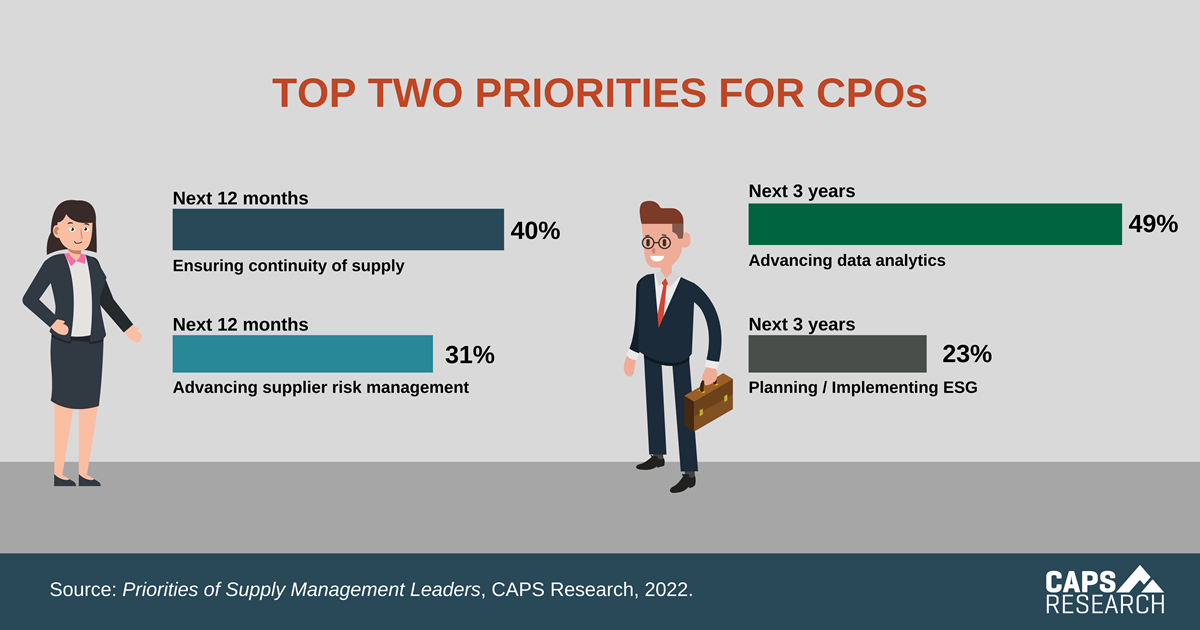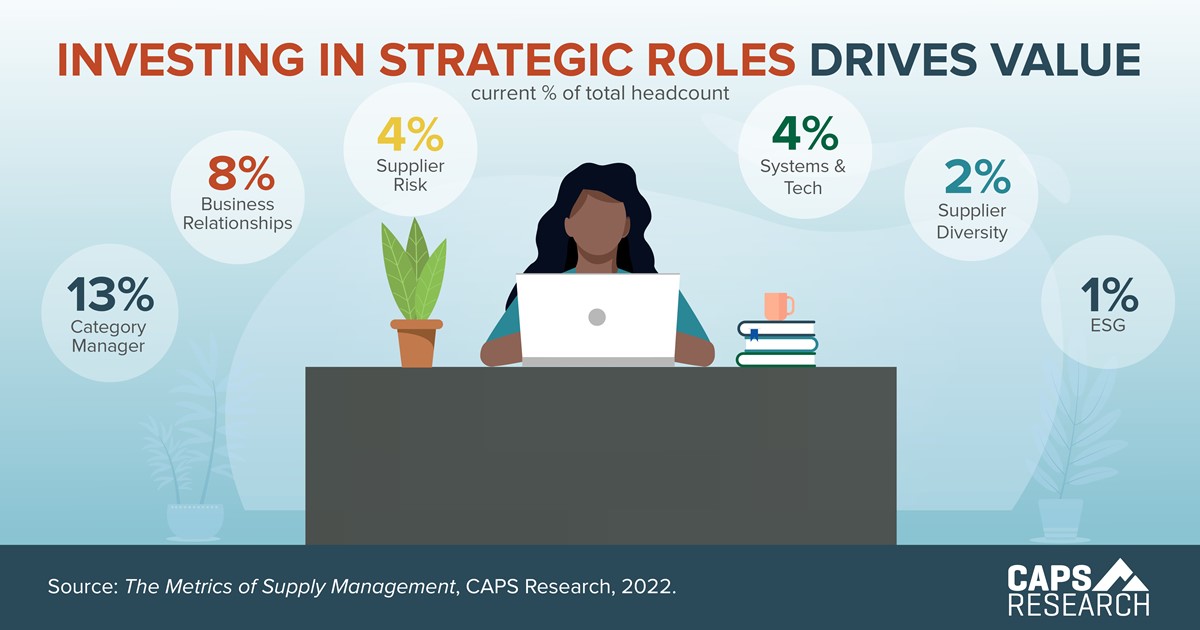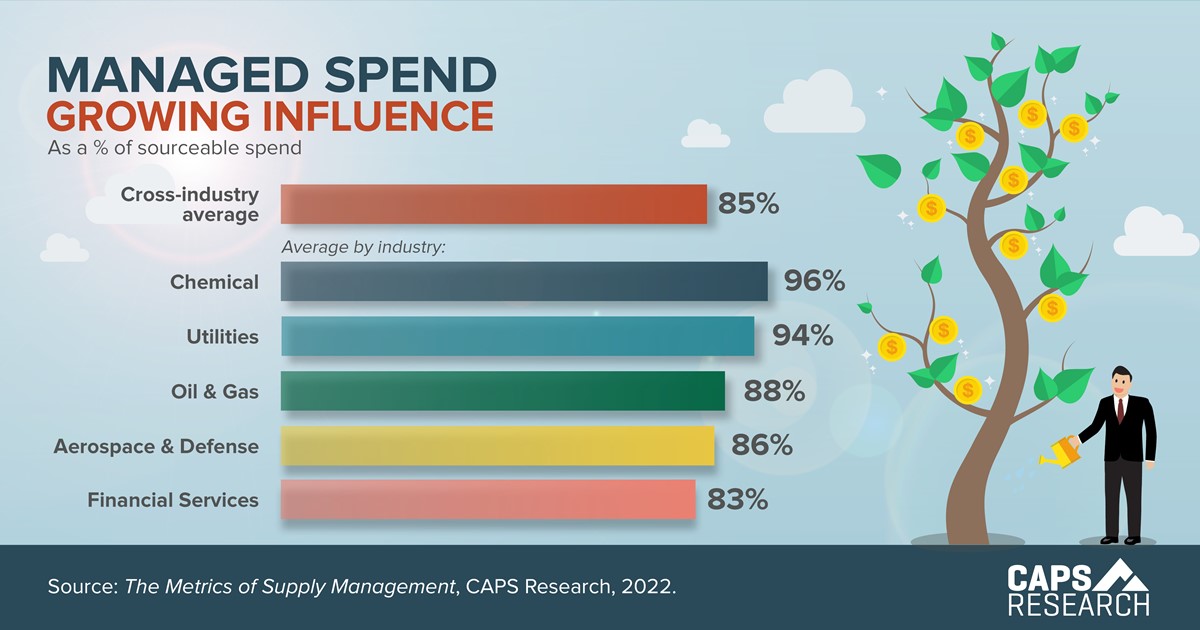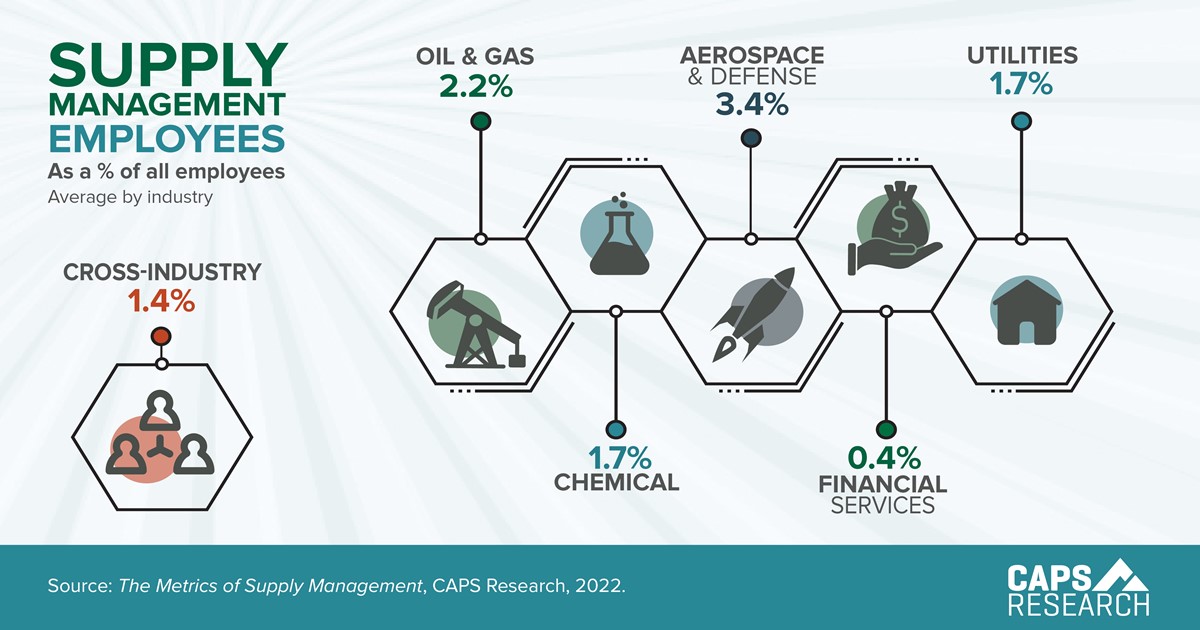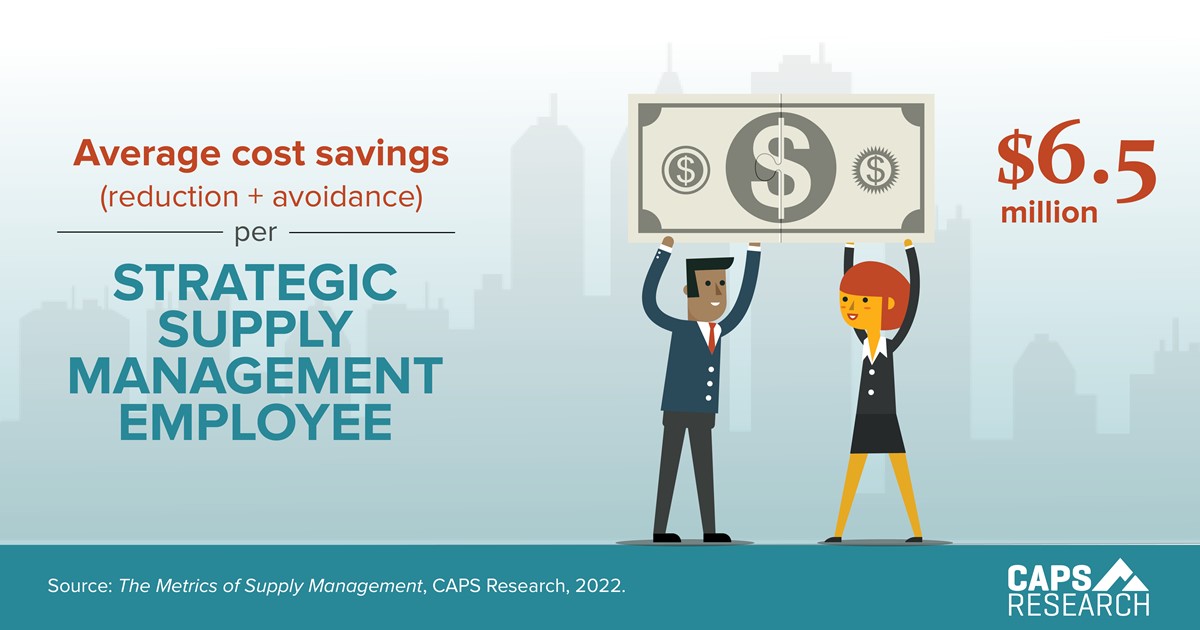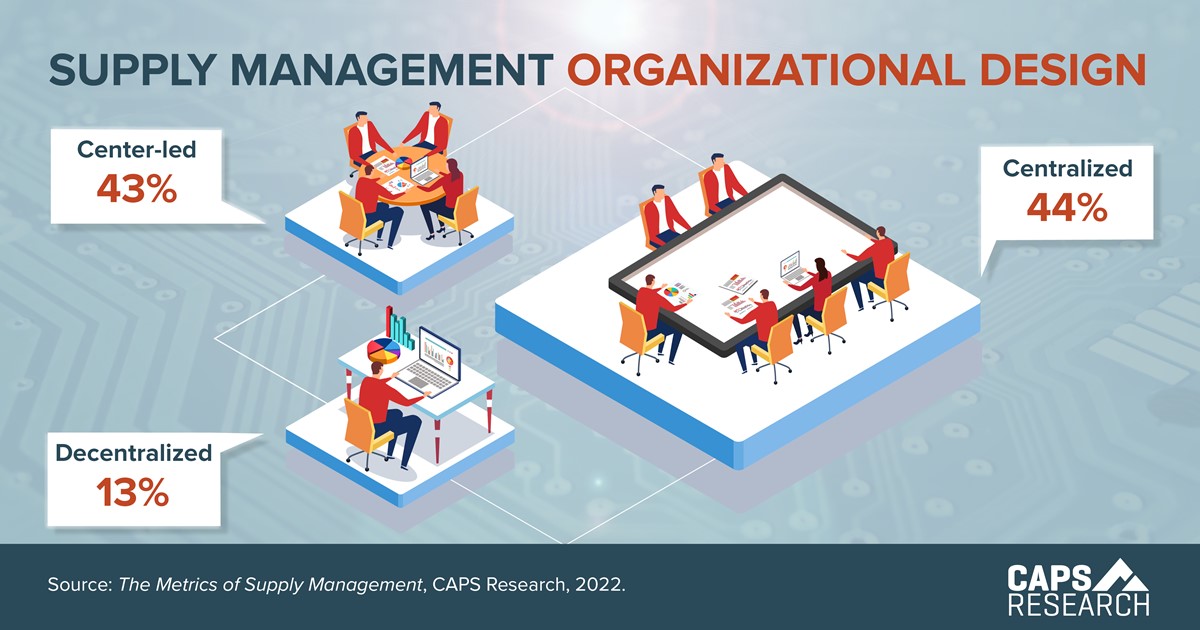Supplier risks of the past and future, last chance CAPS events, think beyond procurement, energy prices, and more.
CPO Priorities
When CPOs ranked their priorities over the next 12 to 36 months, 40% of respondents said ensuring continuity of supply will be their top priority over the next 12 months. Half of CPOs (49%) said advancing data analytics to a more mature level will be the top priority in the next 3 years.
CAPS News - 11 January 2023
In this week's CAPS News, identify supply chain interdependency risks and explore timely SCM topics like a decline in manufacturing and limitless energy.
Santa Stats
Happy Holidays from CAPS Research!
Tactical v. Strategic Buyers
Tactical buying remains the biggest focus for supply management headcount, claiming 31% of resources. Strategic sourcing has the potential to produce greater value, but these resources are a smaller portion of the team mix.
Investing in More Strategic Roles
As companies identify priorities and fill gaps, strategic hires of supply management professionals shift to reflect organizational needs.
Managed Spend Growing Influence
When the business involves the supply management group in purchasing and sourcing, it can increase savings, better leverage organizational spend, and negotiate stronger contracts. Managed spend, as a percentage of sourceable spend, is a primary indicator of a company’s ability to capture value from the supply management process.
Supply Management Employees
Across industries, only 1.4% of the total headcount is supply management employees.
Average Cost Savings
Cost savings is a powerful KPI for demonstrating the value of supply management (SM) to the business. On average, 22.3% of SM employees are in a strategic sourcing role, each delivering $6.5 million in total savings. How does your company compare?
Supply Management Org Design
Companies that undergo organization structure changes as part of an enterprise-wide initiative or market-driven decision face a huge endeavor, but data indicates these changes don’t happen frequently. For the last three years, an average of 74% of companies say they’ve operated under their current org structure for five or more years (Metrics of Supply Management, 2020 - 2022).

